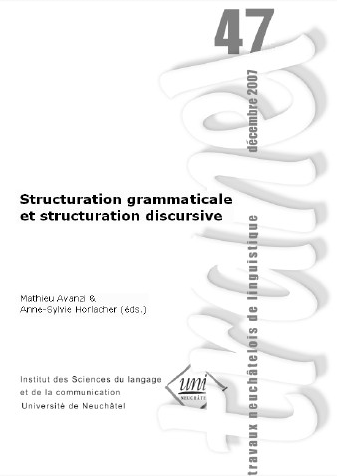La dislocation à droite comme ressource pour l’alternance des tours de parole: vers une syntaxe incrémentale
DOI :
https://doi.org/10.26034/tranel.2007.2737Résumé
In spoken interaction, participants can sometimes be seen to self-select after a possible turn completion point, expanding thus their own speaking turn. Conversation analytic research has variously described such turn-continuations – the wide-spread accepted term being increments (Schegloff, 1996, 2000, 2001; Ford, Fox & Thompson, 2002; Walker, 2001, 2004; Couper-Kuhlen & Ono, 2007). In French, extensions of this kind consist frequently of a nominal phrase which is co-referential with the referent figuring in the first part of the turn. The syntactic structure resulting from such expansions has been called by functional linguists a right-dislocation and sometimes interpreted in terms of afterthought – that is some kind of post hoc clarification of a referential item.
Drawing on radio phone-in confidential chats, we will first show that the notion of increment is somehow problematic when analyzing naturally occurring data in which syntax is to be taken as a real-time phenomenon, which is deployed moment-by-moment and locally managed, so that a syntactically complete turn-so-far can always be extended through further additions.
Secondly, we will argue against the notion of afterthought as an explanation for the late delivery of the nominal phrase. Focussing on the research which has been undertaken in recent years in the field of interactional linguistics, we will show that one interactional task which speakers accomplish through turn extensions is to delete the first possible turn completion point and to exhibit the end of the extension as a new slot which creates a second opportunity for the interlocutor to take the turn or to exhibit alignment. In this sense, formulating a turn extension can be seen not only as an example of emerging grammar, but also as a resource that participants use for pursuing a response and creating an opportunity space for co-participants to display their aligning stances.
Finally, we will discuss the implications that the realization of these incremental right-dislocations have for the conception of syntax and grammar.


